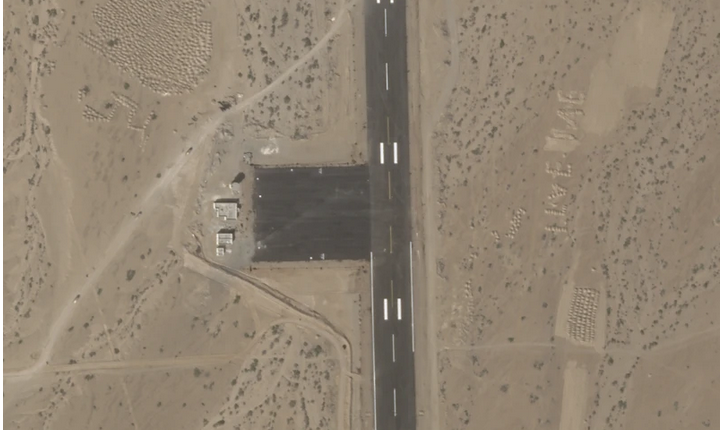American magazine reveals readiness of aircraft runway on Yemen’s Abdul-Kuri Island,
WASHINGTON, Feb. 25 (YPA) – The American magazine “The Maritime Executive,” which specializes in maritime transport affairs, has revealed the readiness of the aircraft runway on Abdul-Kuri Island in the Yemeni Socotra Archipelago, east of the Gulf of Aden.
The magazine confirmed that a satellite took a picture in mid-February of a large transport plane on the northern end of a runway at an airport it described as “mysterious,” located on the Abdul-Kuri Island overlooking the Gulf of Aden and the southern entrance to the Red Sea.
The details of the image that ordinary users monitored show that the plane’s configuration and wingspan match those of a C-17 transport plane, the magazine explained. It stressed that Abdul-Kuri Airport is operating at full capacity.
The magazine added that the missing part of the northern end of the runway has been completed using concrete, and white runway marks similar to those on the rest of the runway have appeared on it.
It suggested that the use of concrete in building this section was intended to bear the weight of heavy aircraft such as the C-17 during landing and the collision of their wheels with the runway floor.
The airport has been witnessing a regular visit from a smaller plane with less than 25-meter-long wings, stopping in the square during its short stay.
It is not known where this aircraft is permanently based or from where apparent operational activity on the island is supported.
It is noteworthy that the UAE started creating the joint military base with the Zionist enemy in 2021 on theAbdul-Kuri Island.
The Associated Press reported in mid-January that the island’s airstrip is a strategic location for military operations and patrols in the waterway, especially with the decline in commercial shipping through the Gulf and the Red Sea, a major route for transporting goods and energy to Europe, following military operations in support of Gaza by what the agency described as the “Houthis.”
YPA


